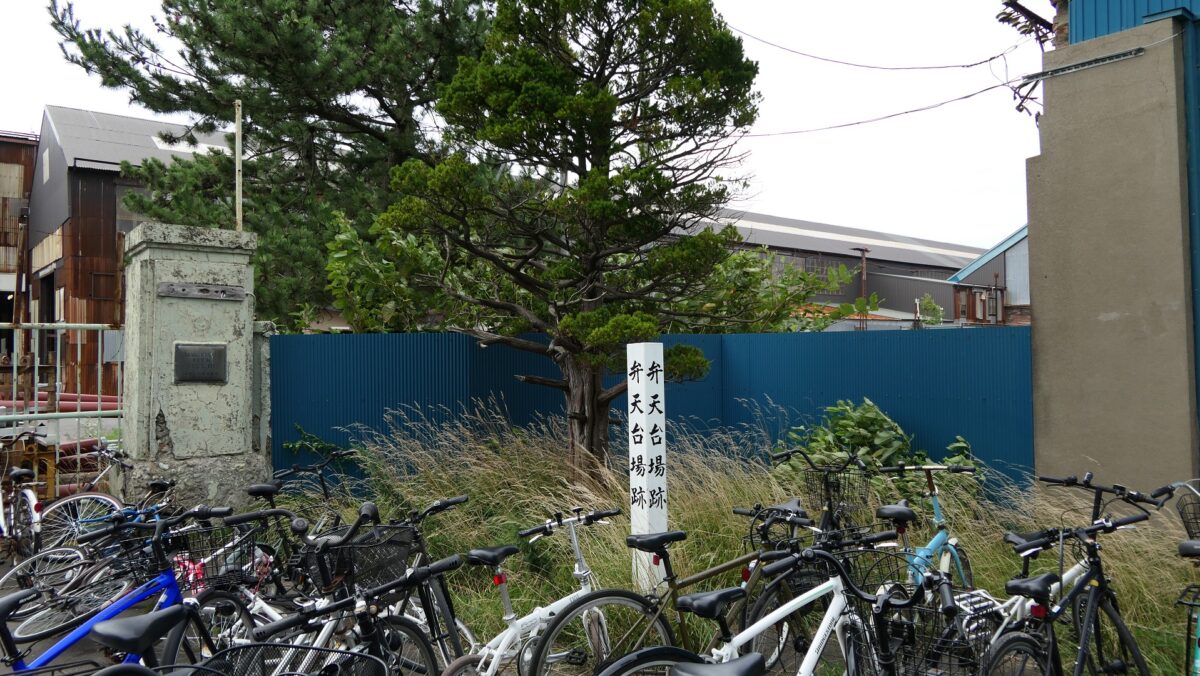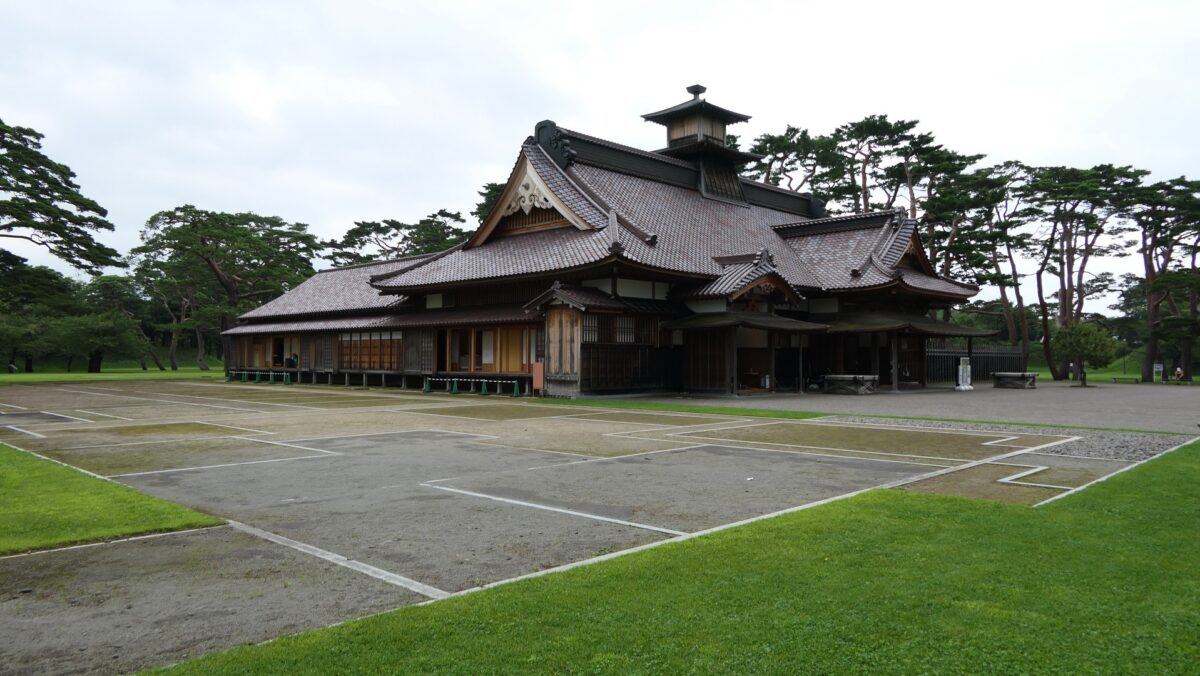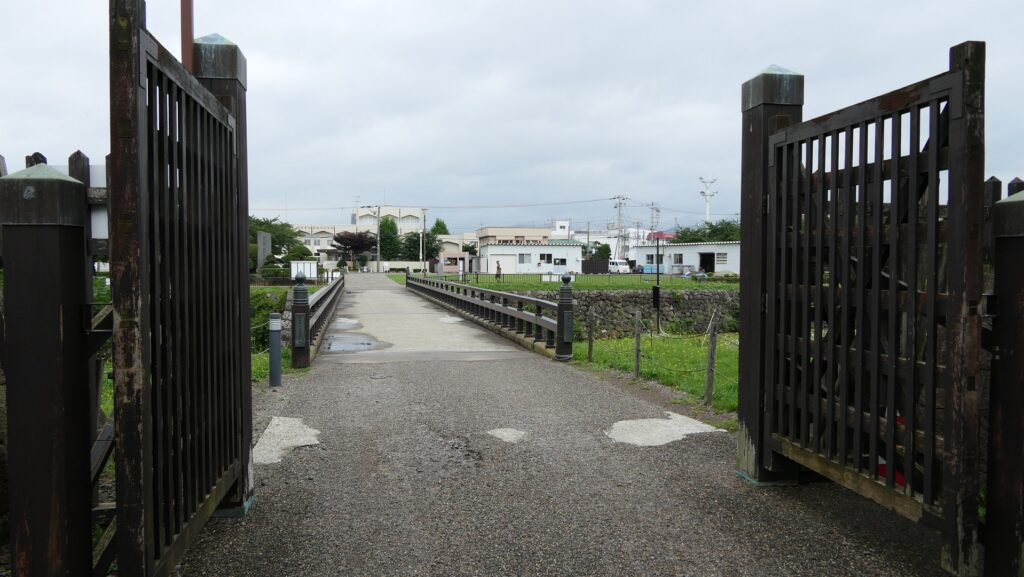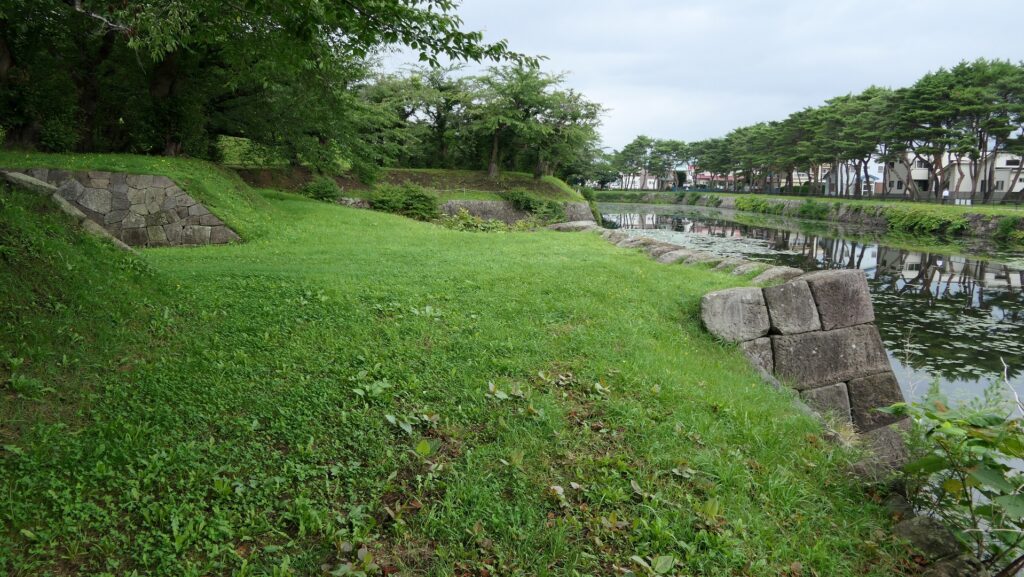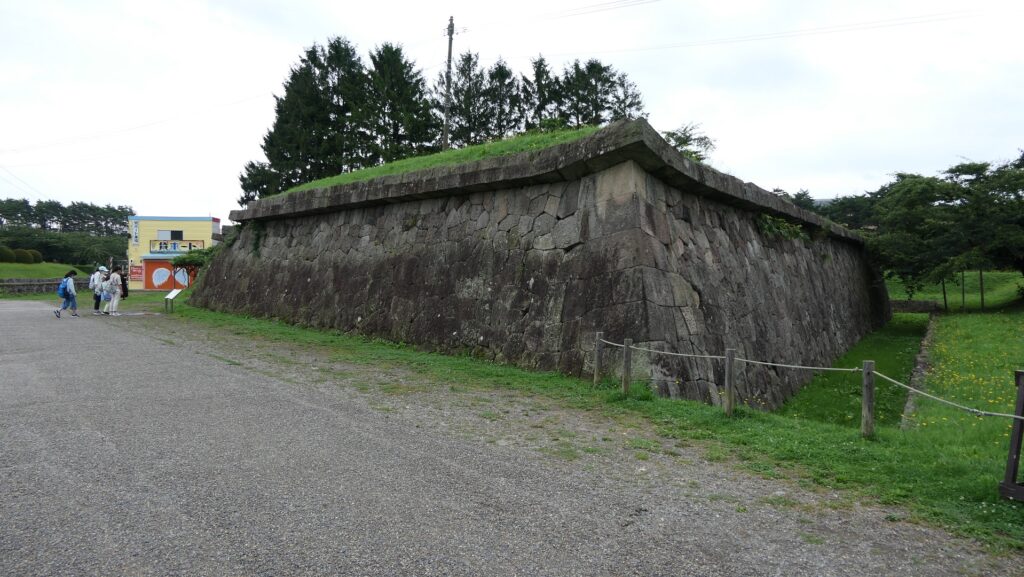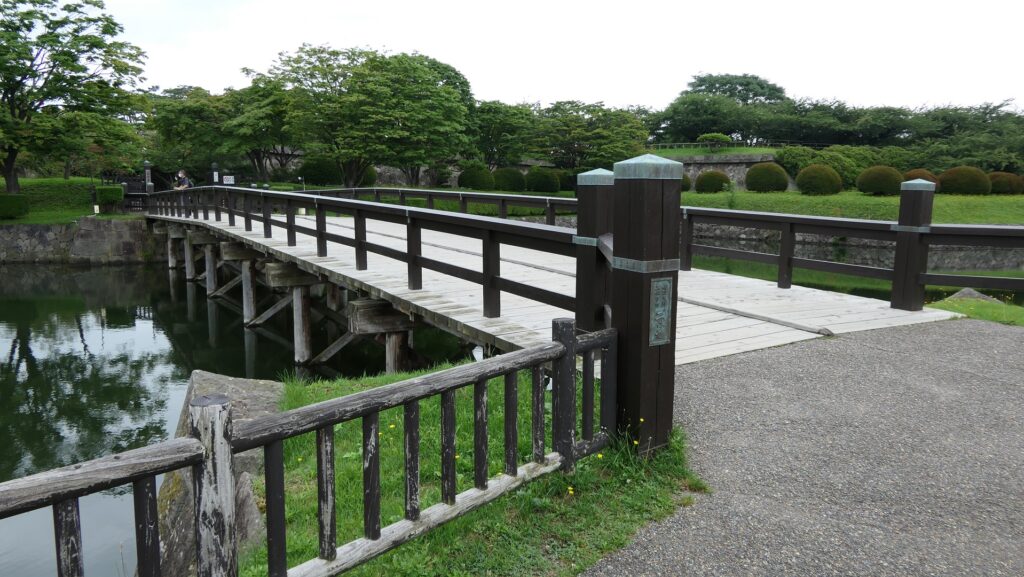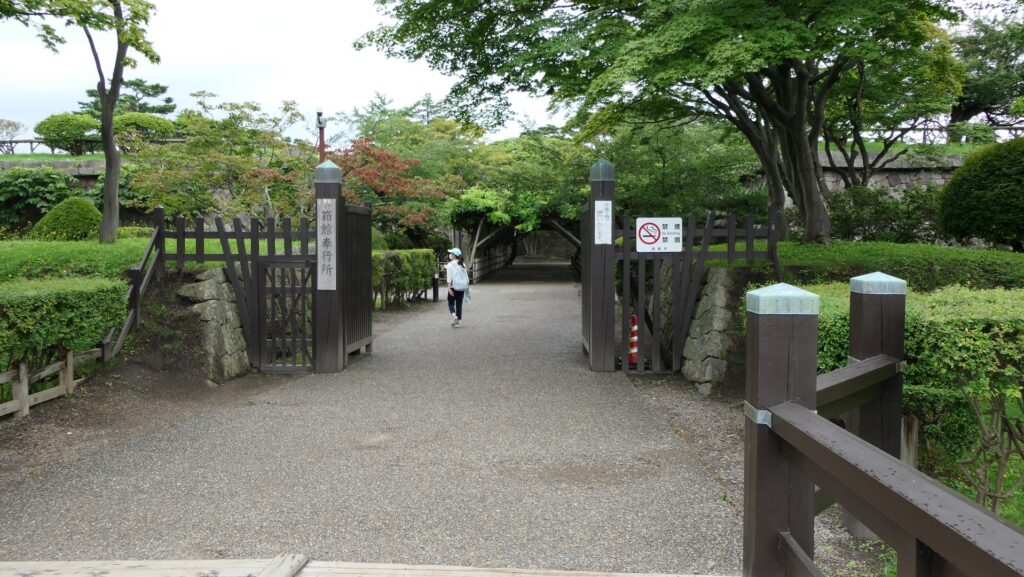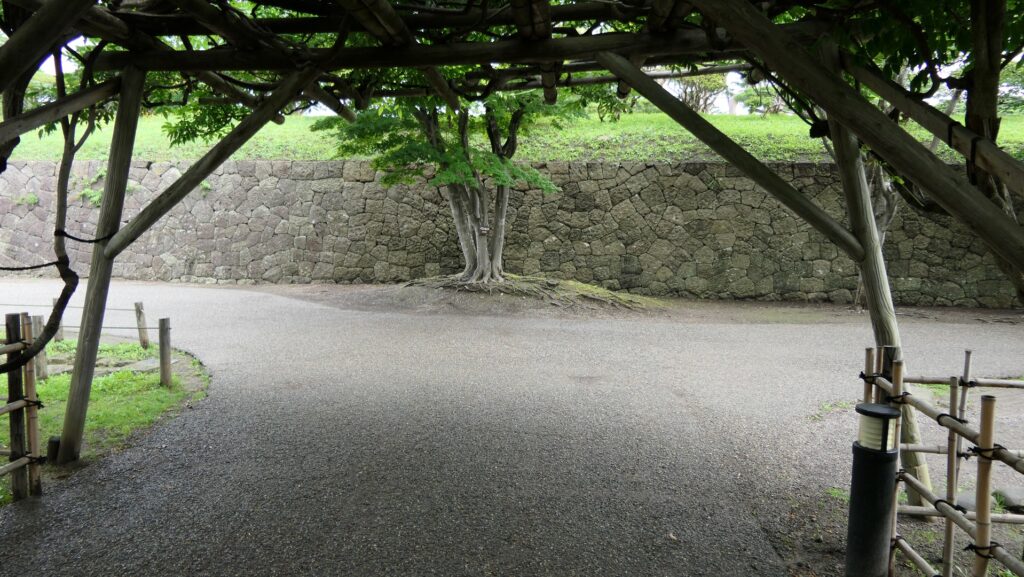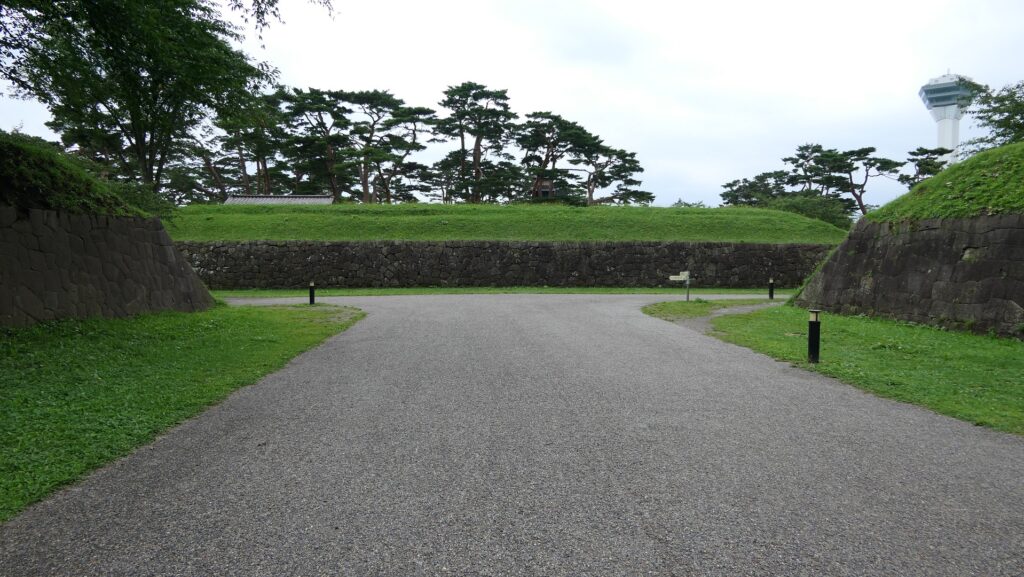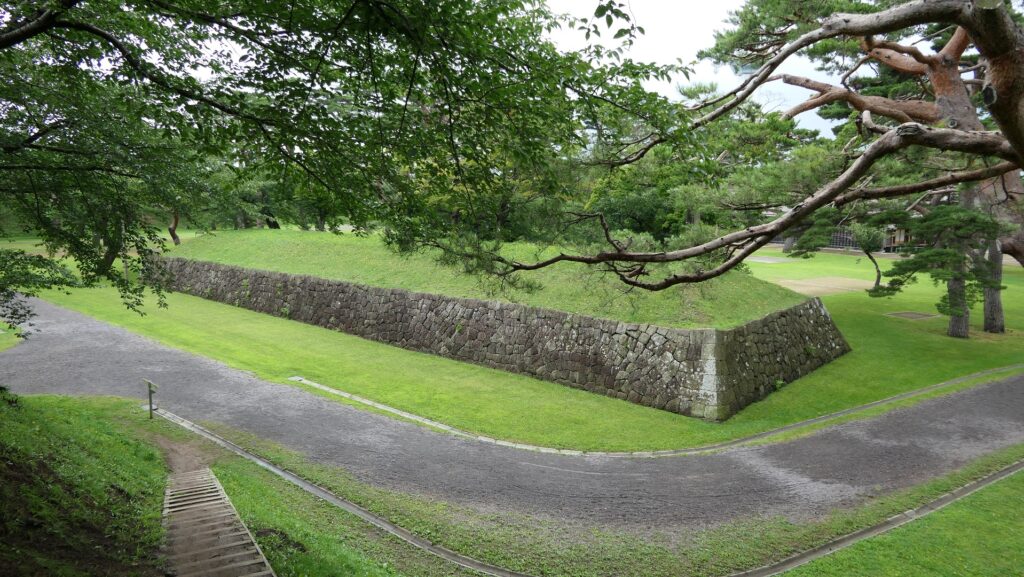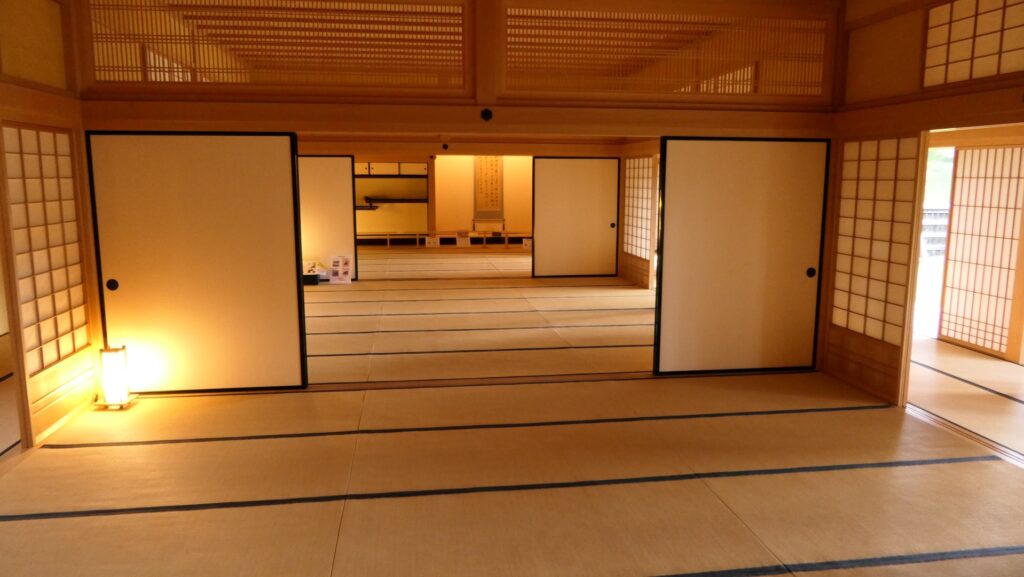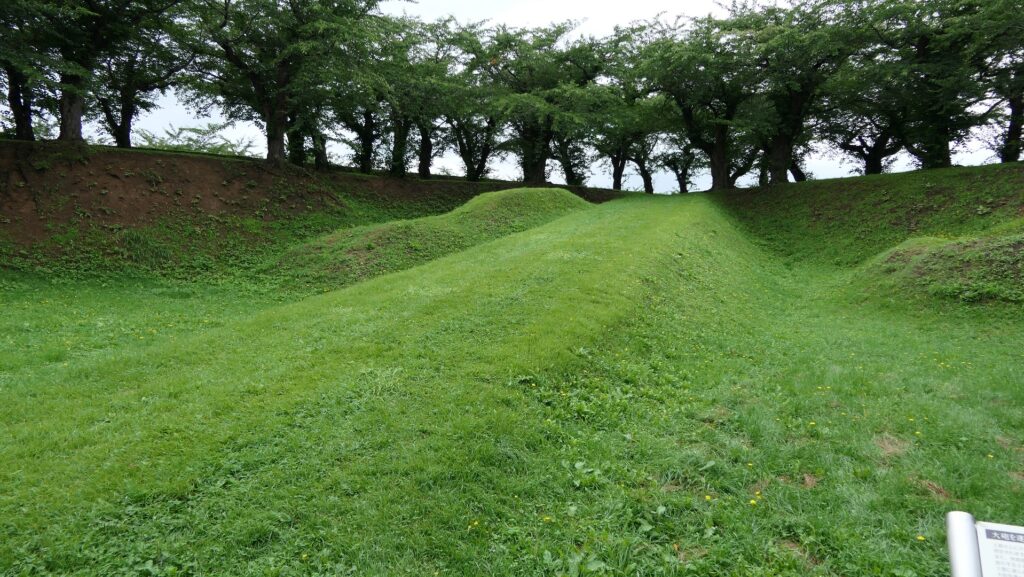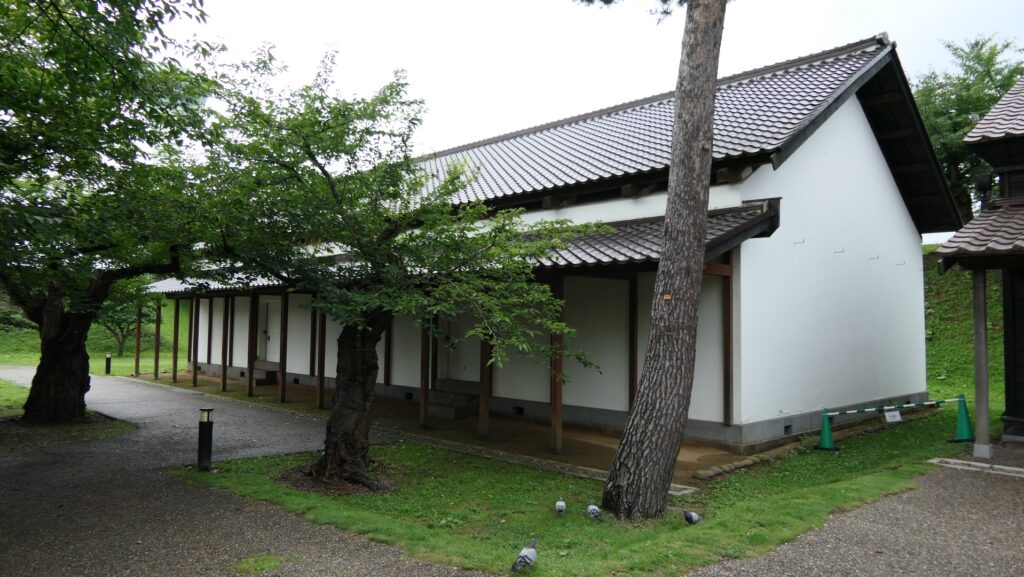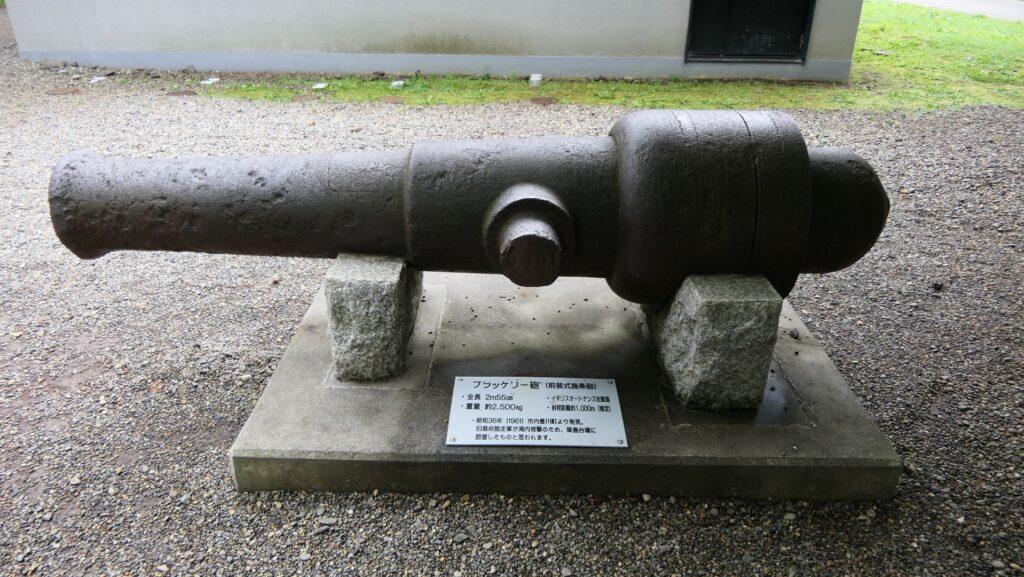Features
Goryokaku Tower
Apart from the ruins themselves, you should consider visiting Goryokaku Tower, a 107m tall observation platform built exclusively for viewing Goryokaku. Goryokaku was designed flat to prevent enemies’ canons from targeting anything, so today’s visitors might not be able to grasp its shape. If you go up in the elevator of the tower to its observation room at 90m high, you will enjoy a great view of the star shaped fort.
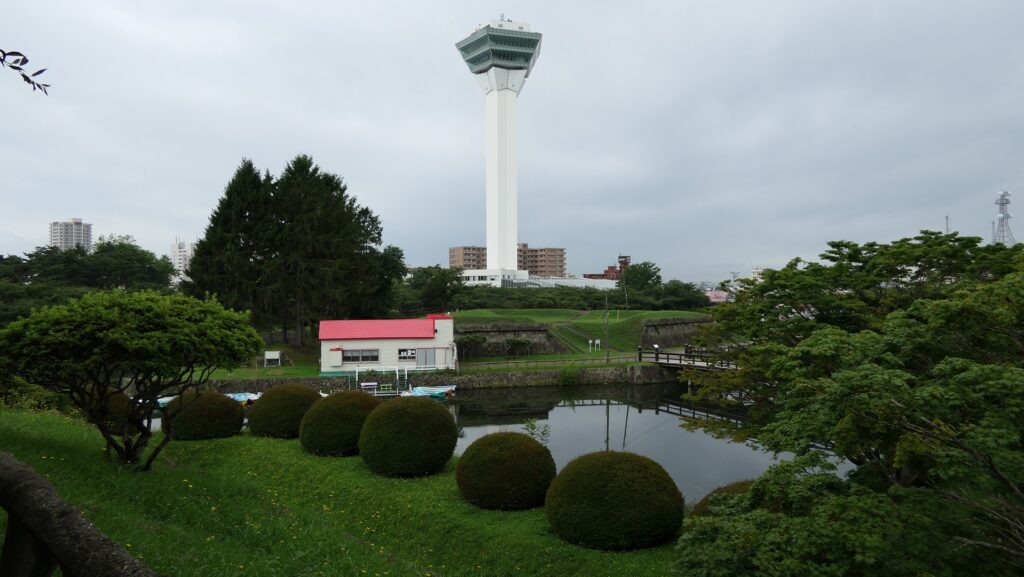
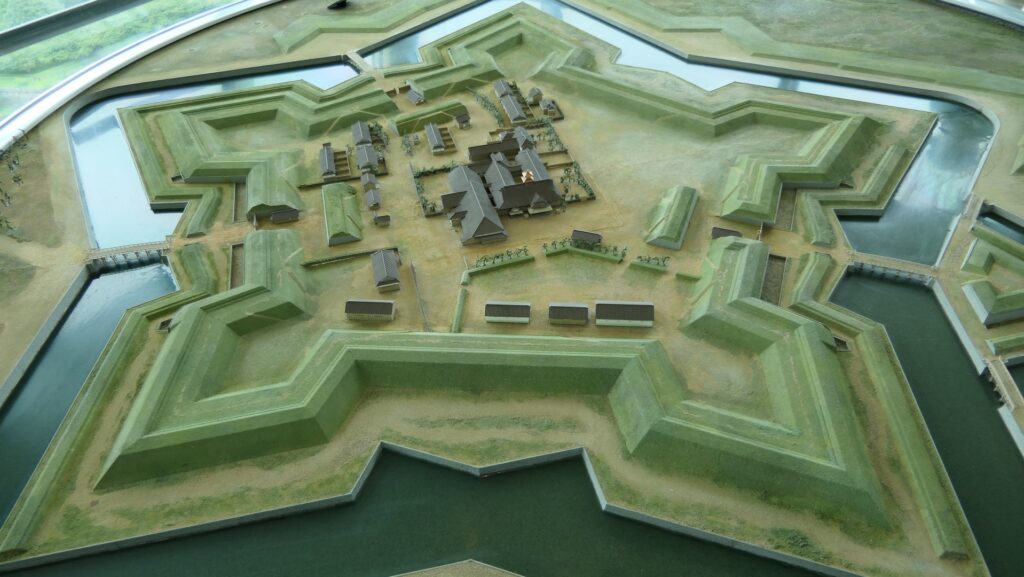
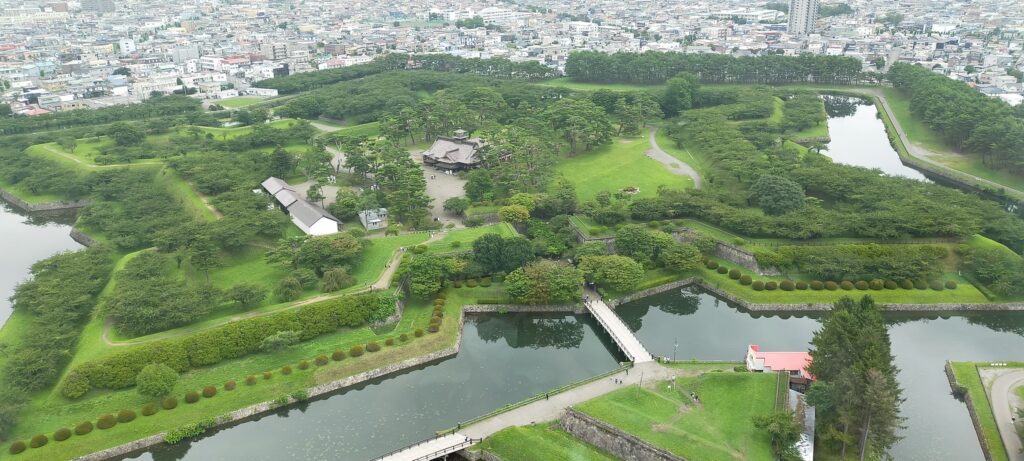
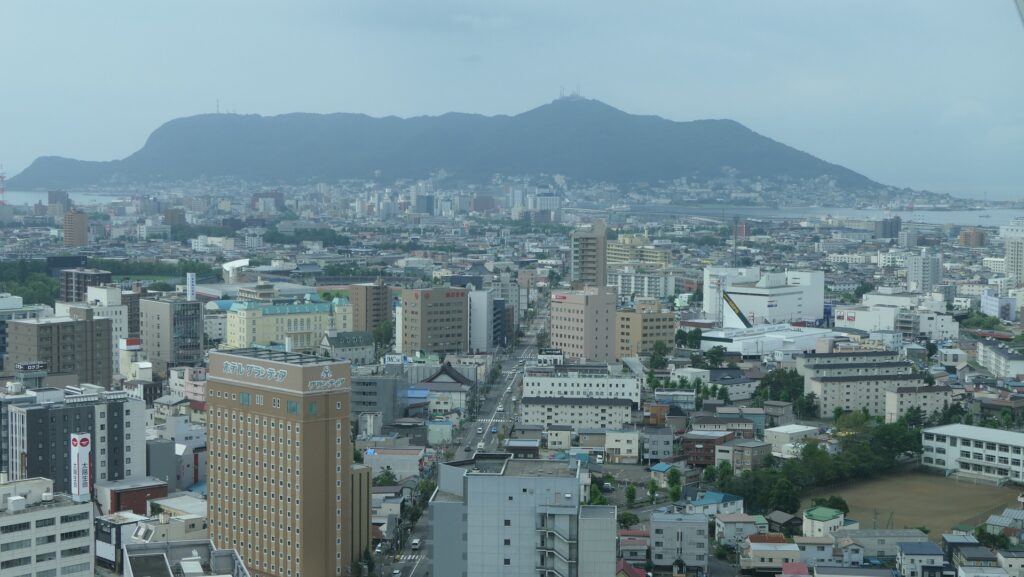
Ruins of Square Style Fort
Another attraction related to Goryokaku is the ruins of Shiryokaku, the Square Style Fort, about 5km away from Goryokaku in the northeast. It is much smaller than Goryokaku, so you can see its unique structure once you arrive at the ruins.
The aerial photo around the castle
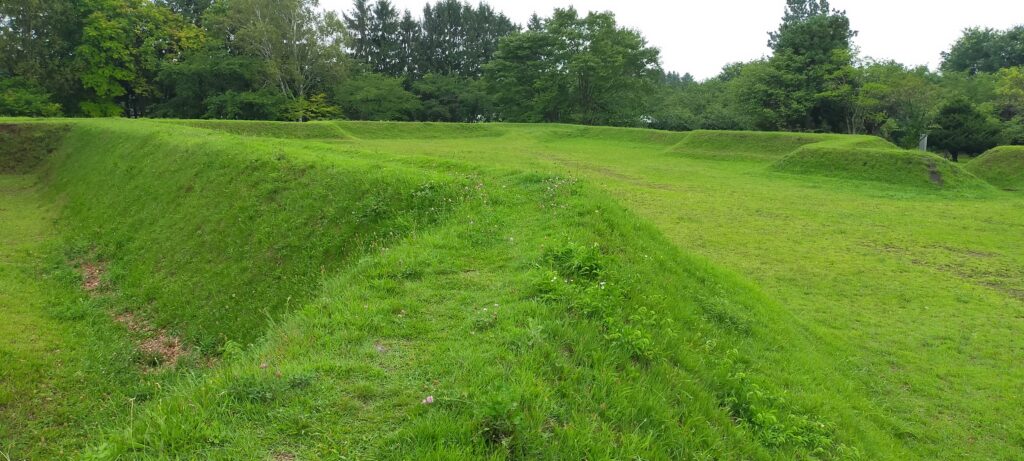

Later History
After the Battle of Hakodate ended, almost all the buildings of Goryokaku were demolished. The Imperial Japanese Army owned the ruins to use as a parade ground during the Meiji Era. In addition, the water in the moats was used to make ice blocks called Hakodate Ice between 1870 and 1953. This was because the water had been led from Kameda River and was clean since the foundation of Goryokaku. In 1913 during the Taisho Era, Hakodate City asked the Minister of the Army to open the ruins as a park, which was accepted in the next year.
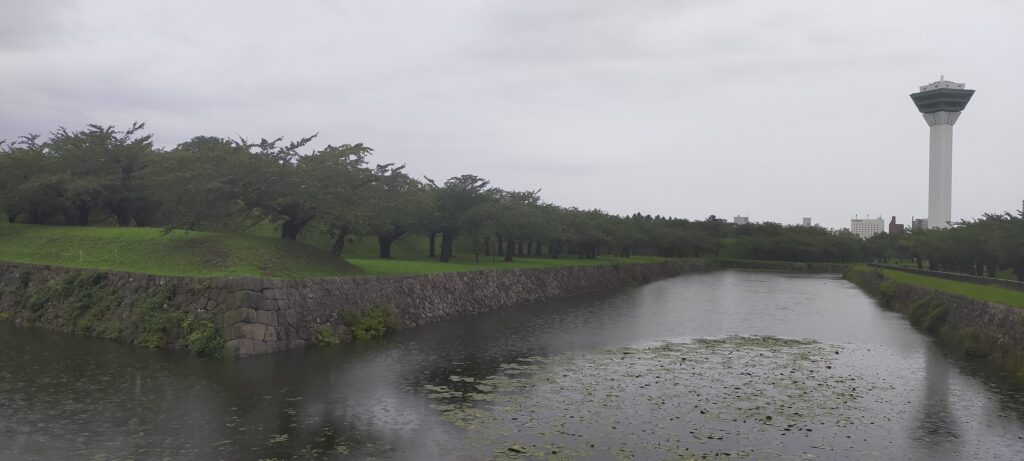
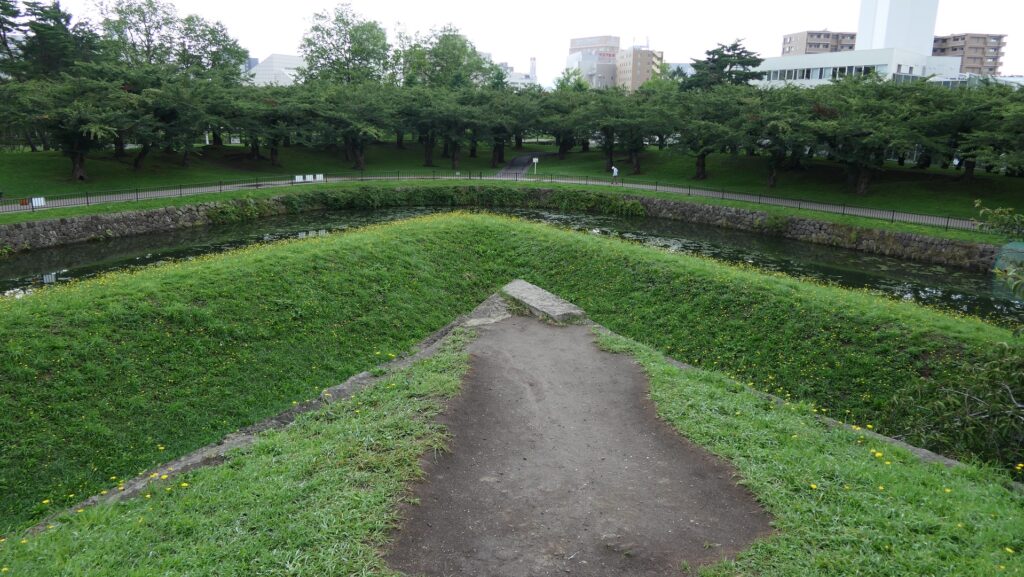
My Impression
I regret that there are no ruins of the Benten Cape Battery at all. It was completely scrapped and its stone materials were reused for the improvement of Hakodate Port in 1899. Only the signpost stands now where the battery was. If only a little of it remained like Shinagawa Batteries in Tokyo Bay, people could easily understand the sharing of roles between it and Goryokaku. Anyway, I hope Goryokaku will keep its unique position in the Japanese history with its unique style among Japanese castles.
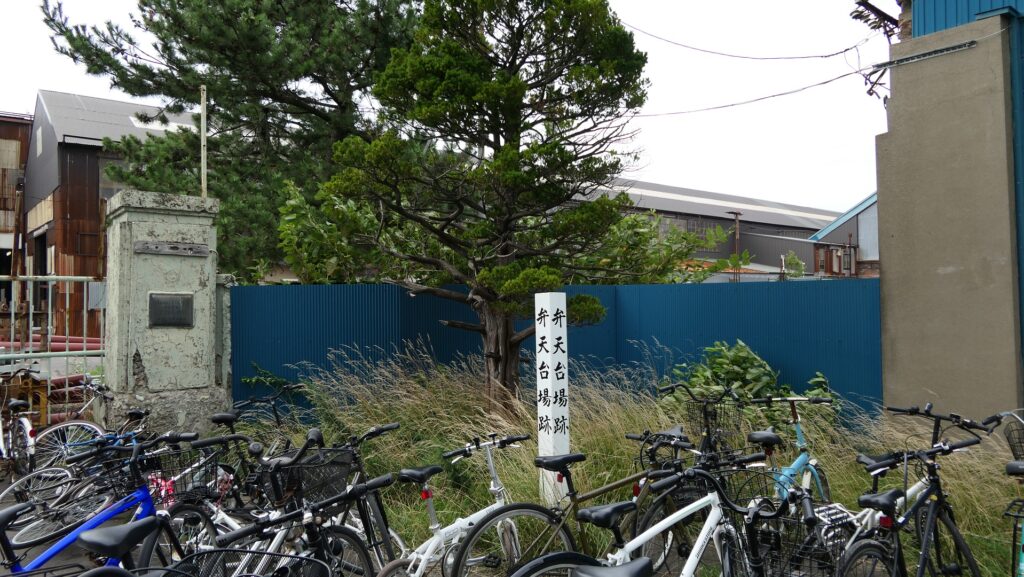
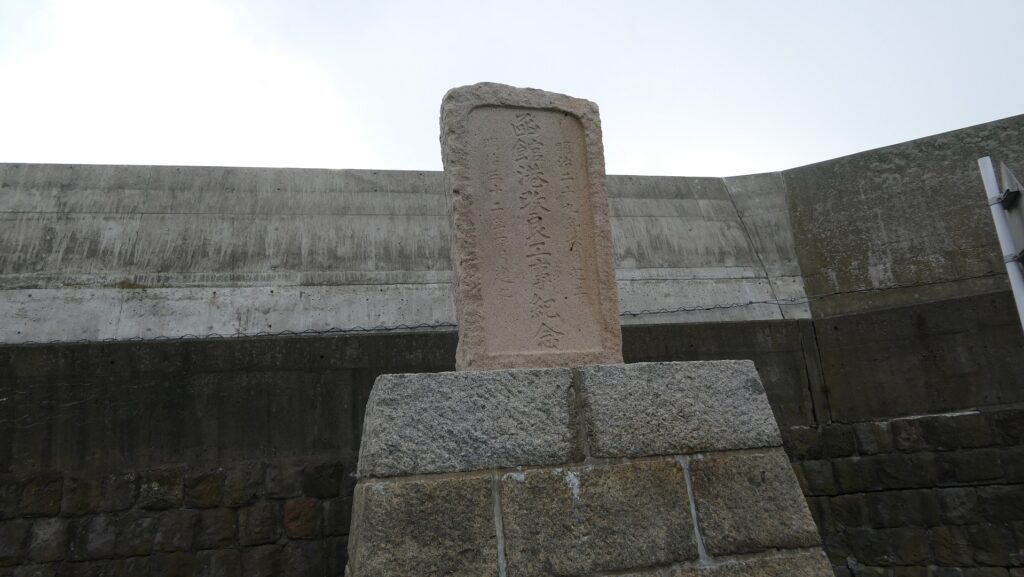
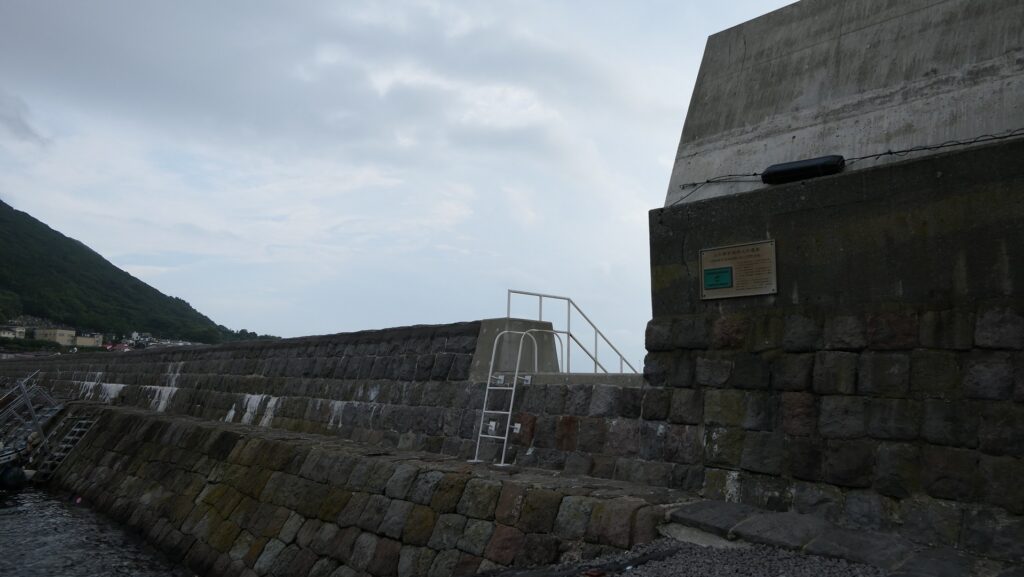
How to get There
If you want to visit the ruins by car, It is about a 20-minute drive away from Hakodate Airport or the center of Hakodate City. From Shin-Hakodate-Hokuto Station, it takes about 40 minutes to get there. There is a parking lot for visitors beside the park.
If you want to use public transportation, you can take the Tram Hakodate bound for Yunokawa from Hakodate Station and get off at the Goryokaku-koen-mae stop. It takes about 15 minutes on foot from the stop to get there.
To get to Hakodate Station from Tokyo or Osaka: Take the Hokkaido Shinkansen super express at Tokyo Station and transfer to the Hakodate Line at Shin-Hakodate-Hokuto Station.
Links and References
・Official Website of Goryokaku Tower
That’s all. Thank you.
Back to “Goryokaku Part1”
Back to “Goryokaku Part2”

